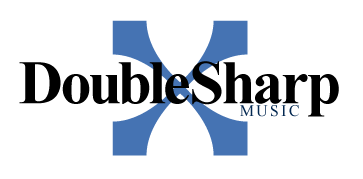Using Reverb (Best Practice)
- Timothy Wheeler
- 12 hours ago
- 3 min read
When I work with new or inexperienced audio engineers and producers, there is a basic mistake that I see over and over. When we use plugins, we traditionally put them on the track we want to affect. If I want to add EQ or compression to a vocal track, I would simply add the EQ or compression plugin directly on that track. But when it comes to reverb, the reverb plugin typically gets handled differently.
We need to remember that when we put any kind of plugin on a track, 100% of that audio signal goes through that plugin, whether we make changes in the plugin or not. Therefore, we are altering the original sound somewhat. 100% of the signal is being run through an algorithm. Make no mistake, it IS altering the sound, whether you hear it or not. Of course, if it’s an EQ, we purposely change the frequencies by boosting or attenuating the frequencies we want to alter. If it’s a compressor, we take care of transients or dynamic range (broadly speaking). Regardless of this, if we were to do nothing at all and simply run the audio signal through the plugin with no changes whatsoever, the sound would still be altered, as I said, whether you can hear it or not.
If we run 100% of the signal through a reverb unit (plugin), then the first offense to the audio signal is it gets touched by the algorithm. There is typically a “mix” knob in the reverb. So, let’s say we set the mix level to 25%. But the problem is that 100% of the signal is going through the reverb plugin (meaning it is getting changed). Then the reverb amount is dialed in by the algorithm to 25%. This always sound a bit different to my ears, compared to the way I am about to explain.
There is a “best practice” in using reverb that is a more sensible way to treat audio with reverb. It is called “Send and Return.” Create a separate stereo “Aux” (auxiliary) channel. Add a reverb insert plugin. Set that channel input to an available stereo bus. On the vocal channel add a bus send, set to that same input for the reverb auxiliary channel. Be sure to set the output of the stereo Aux. to a proper output.
Now, in the reverb plugin, since we’re dealing with a vocal in this example, set a preset to a Plate reverb. Leave the mix level at 100%. Open the bus send on the vocal channel. While playing your music, slowly increase the bus send for the reverb. You will start to see the LED level increase on the reverb aux channel, which reflects the amount of bus send given it from the vocal channel. To set the correct amount of reverb, you will have to use your ears. Dial in an amount you think is appropriate.
One of the ideas behind this Send and Return method is that is reflects the “real world” scenario that gets used in an analog console. In an analog console we use an auxiliary send. This, in effect, sends a “copy” of that signal to wherever that auxiliary send is going – reverb, delay, chorus fx, etc. When we use a bus send in our DAW, it is doing the same thing. It is sending a “copy” of the signal somewhere else. In our scenario here, it is going to a channel that has reverb on it.
For now, leave the reverb channel level at full unity (0 dB). To dial in the amount of desired reverb, simply change the amount of the bus send on the vocal channel. FYI, the channel level on the reverb CAN be changed. I do this somewhat often. But don’t start with this scenario. Wait until you get more advanced.
**SEE pics! The picture at the top of the page is what the Send and Return setup should look like. The pic below is the same setup but with the music being played and showing the audio signal.
You will find that your vocals sound better and cleaner. I’ve got to go over one more thing that is worth knowing for this scenario. Again, many new audio people don’t know about this. It is the knowledge of having a “Master” fader (or channel) in the DAW. I will explain this in my next blog post. Stay tuned …..
As always, I appreciate you taking the time to read this. I sincerely hope that it helps.
Peace – and HEY! Make it a Great Day!!
Tim
aka Wolf
Send and Return for Reverb. The first image shows the setup of channels and routing. The second image shows the audio signal while the music is playing. Note bus send level, Aux. channel level, and reverb plugin level (input and output).





Comments